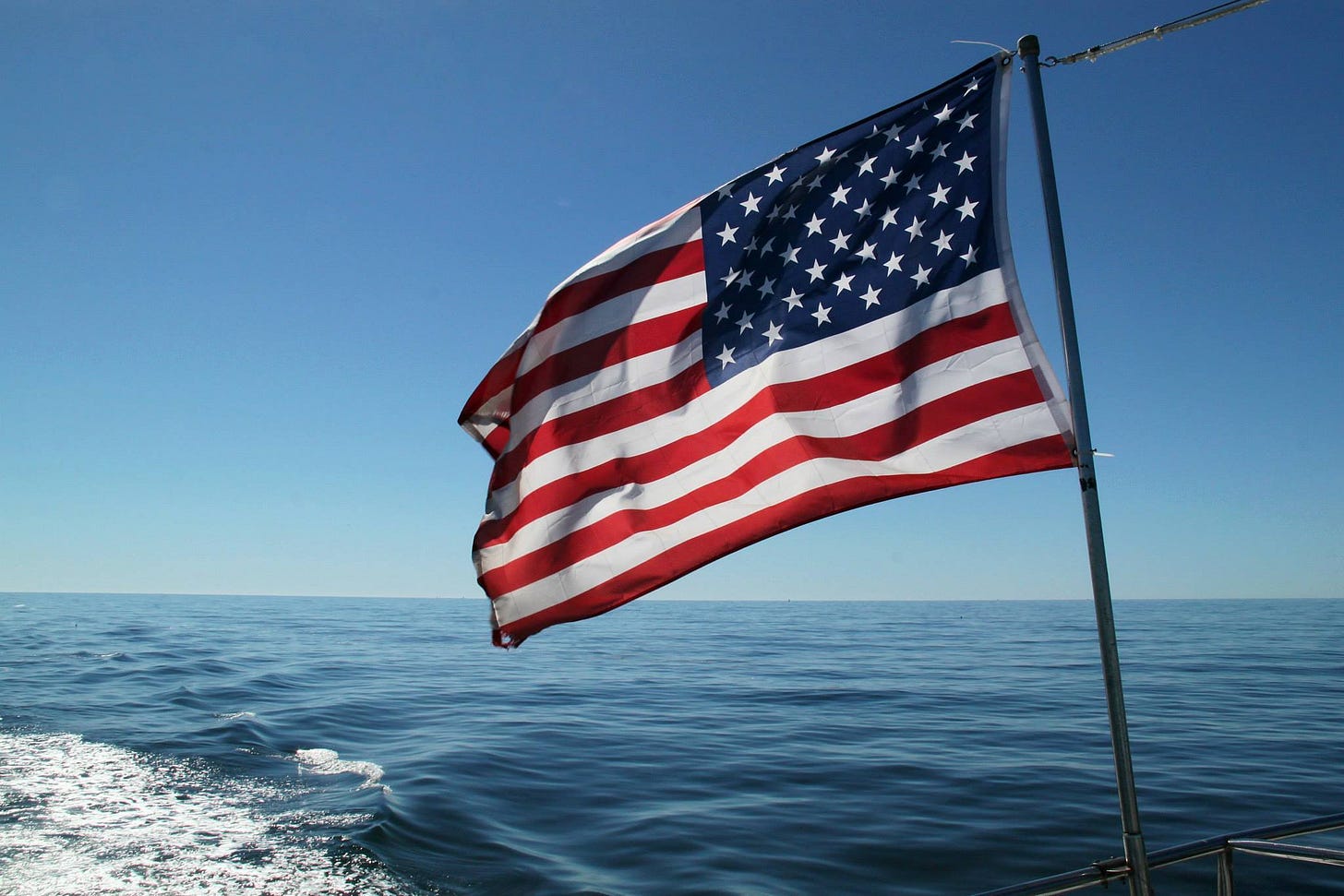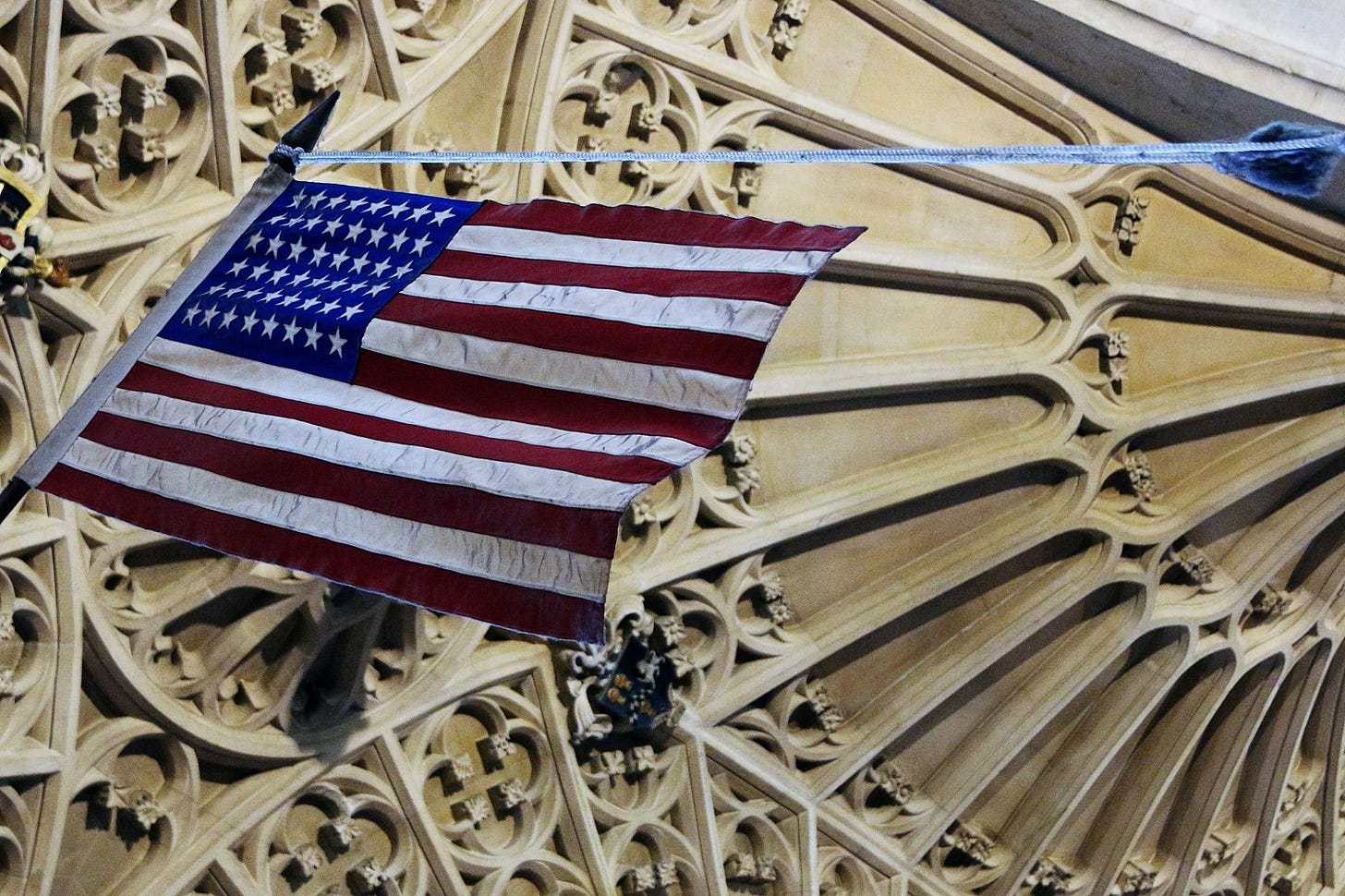✍️ What Our Flag Should Stand For: Liberty and Justice for All
Echoes of the Pledge, the Anthem, and the Constitution.
Some use the U.S. flag as a political weapon. But it doesn’t belong to any one party or group. It doesn’t belong only to those who stand and salute at every opportunity.
The flag belongs to all of us—those who’ve long enjoyed its protections and those still fighting to be fully included in its promise.
Waving the flag shouldn’t be about declaring superiority or silencing dissent. It should reflect our commitment to the work ahead—to establish justice, ensure domestic tranquility, promote the general welfare, and secure the blessings of liberty—the very purposes for which our Constitution was created.
That’s the real spirit of “The Star-Spangled Banner.” Written by Francis Scott Key during the War of 1812, it captures a moment of uncertainty—when the fate of Fort McHenry, and perhaps the young nation, was still unknown.
The first verse ends not with a boast, but with a question: “Oh, say does that star-spangled banner yet wave?”
That question still echoes today. Will the flag continue to stand for a country that honors its promises?
The Pledge of Allegiance, first written in 1892, doesn’t offer a simplistic commitment to a piece of cloth. It pledges loyalty to “the Republic for which it stands”—a government of laws, guided by the Constitution, and shaped by the people.
Its most powerful words are also its last: “with liberty and justice for all.”
Not just liberty. Not just justice. And not just for some. That final phrase is a goal we’ve never fully achieved—but it’s one we can never afford to abandon.
Both the anthem and the pledge remind us that the flag’s meaning doesn’t come from ceremony or ritual. It comes from the hard work of democracy—from ensuring that all people have a voice, a vote, and equal protection under the law.
That’s what the flag is meant to represent. And that’s why Flag Day, observed each year on June 14, still matters. It marks the day in 1777 when the Continental Congress adopted the Stars and Stripes as the official flag of the United States—13 stars and 13 stripes for the 13 colonies that declared independence.
But the flag wasn’t meant to mark dominance. It symbolized a new kind of country that would belong not to kings or aristocrats but to its people.
Its meaning is not frozen in time; it’s carried forward by each generation that fights for a more perfect union.
So on this Flag Day, don’t just wave the flag. Live its promise. Work for liberty and justice. Please stand up for our Constitution. Make that star-spangled banner mean something … for all of us.
📷 My Flag, Our Flag — A Photo Reflection
I’ve taken these and other photos of the U.S. flag over the years—in times of celebration, protest, and reflection. They remind me that the flag isn’t just a symbol of where we’ve been but of what we must still become: a nation with liberty and justice for all.
Scroll down to view.










